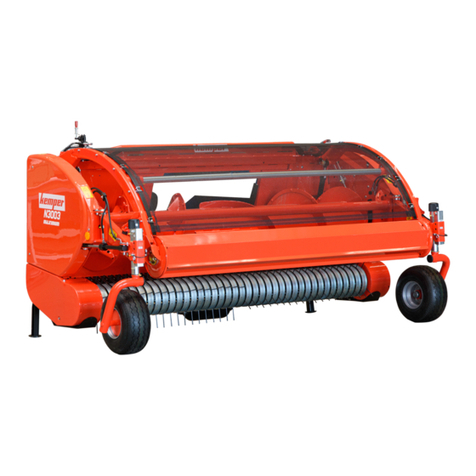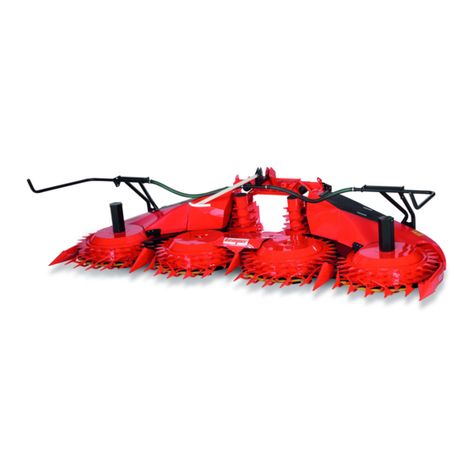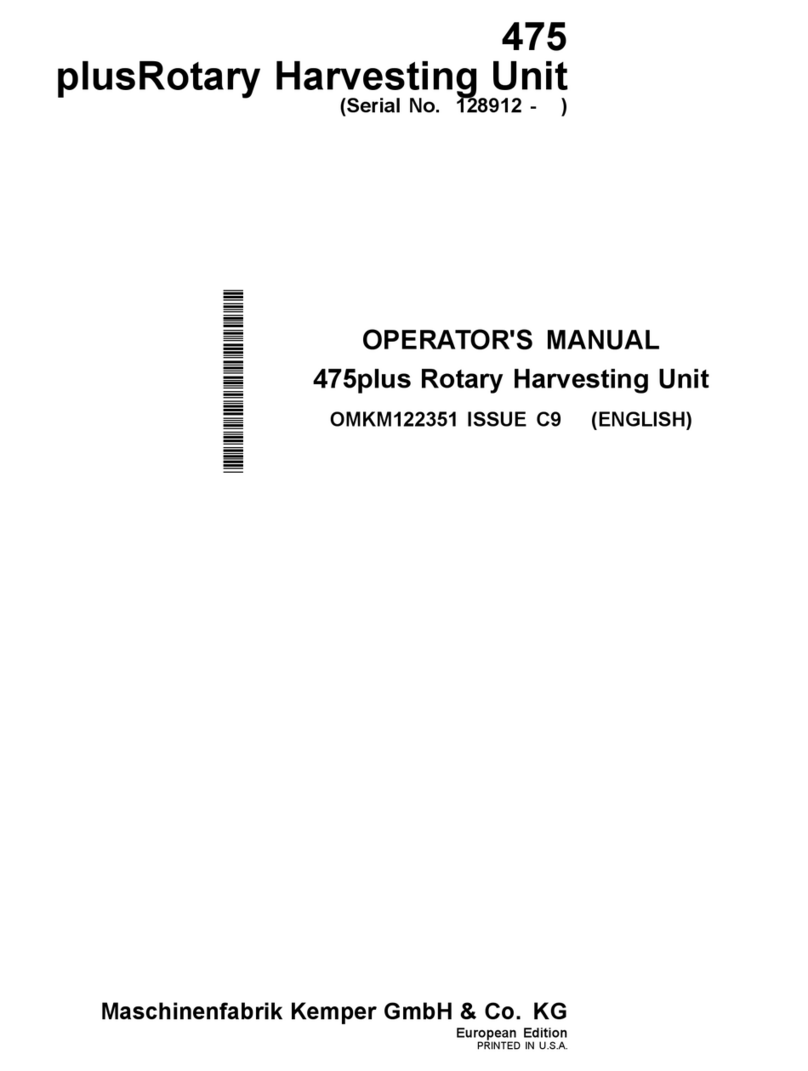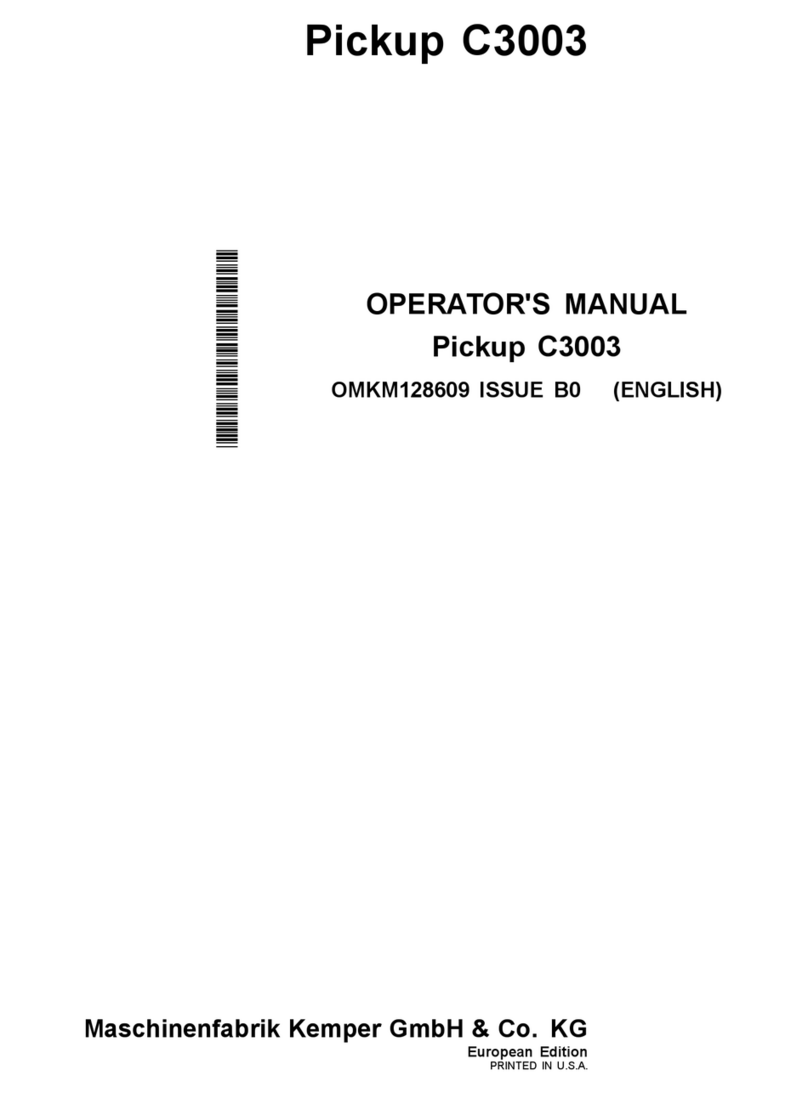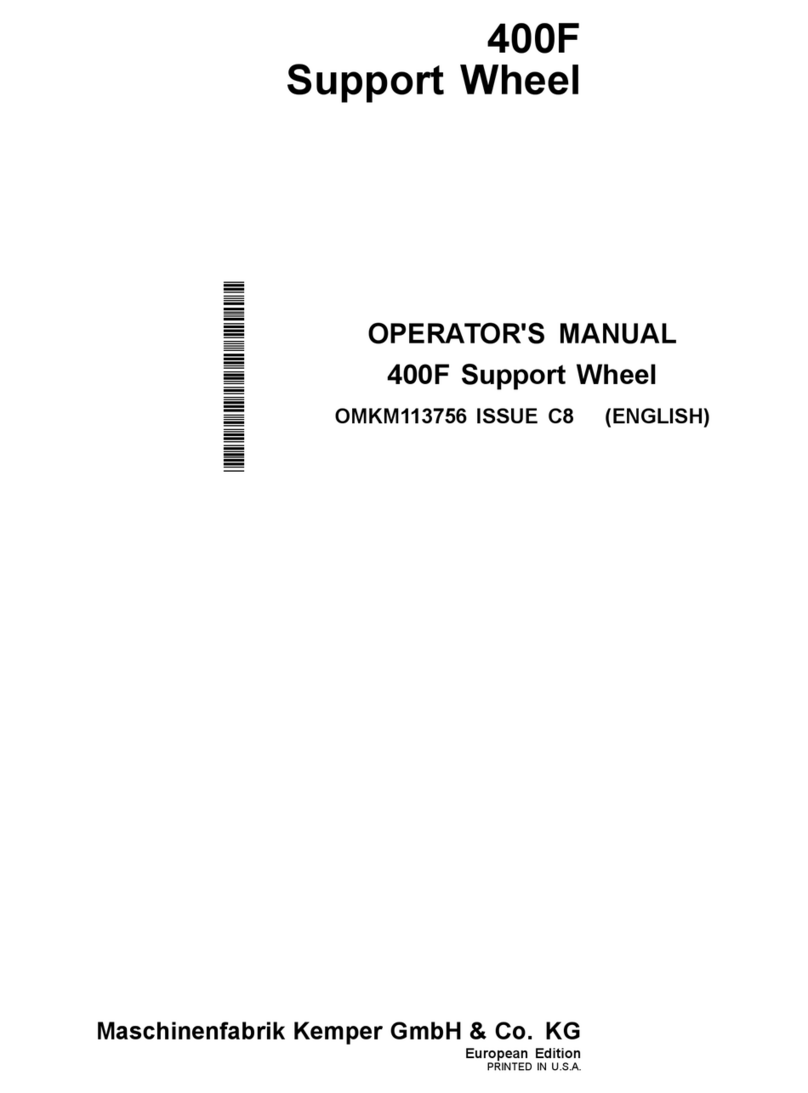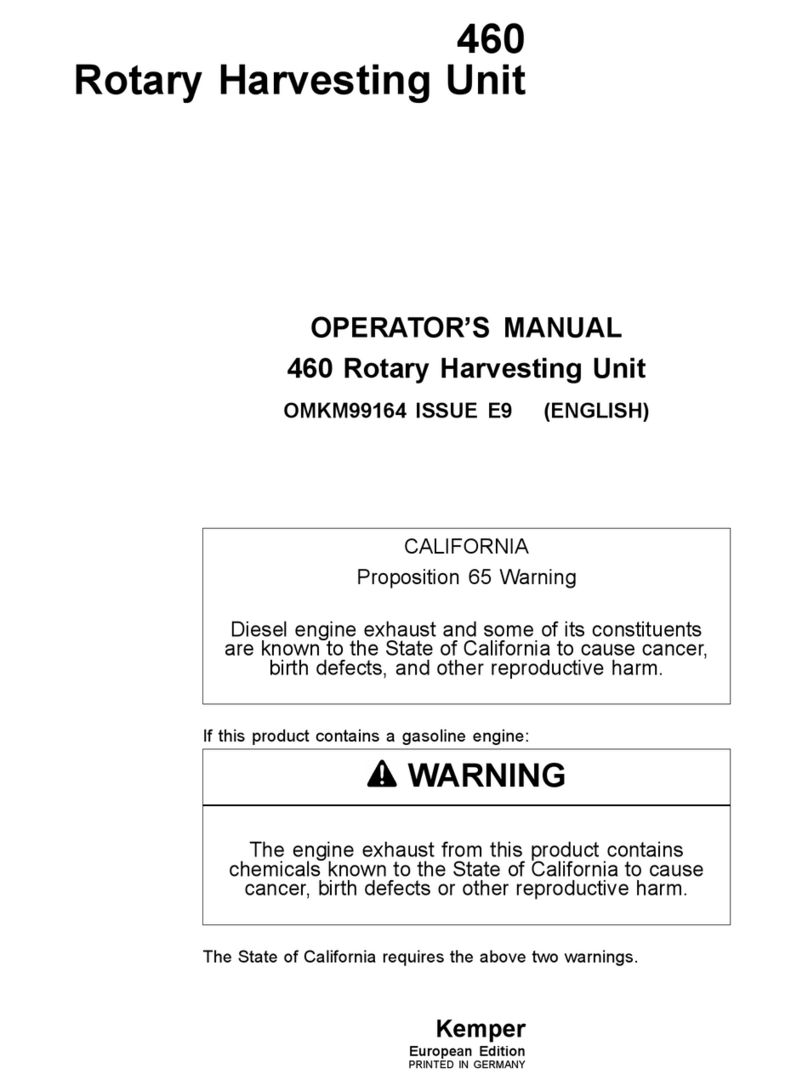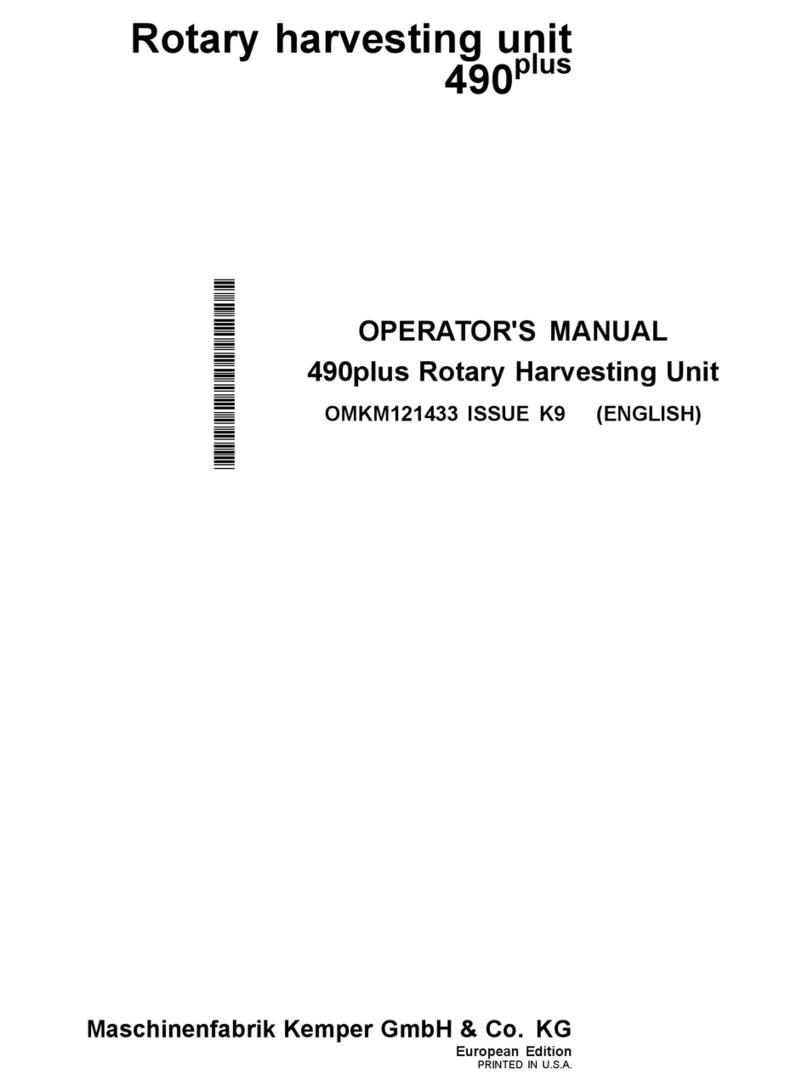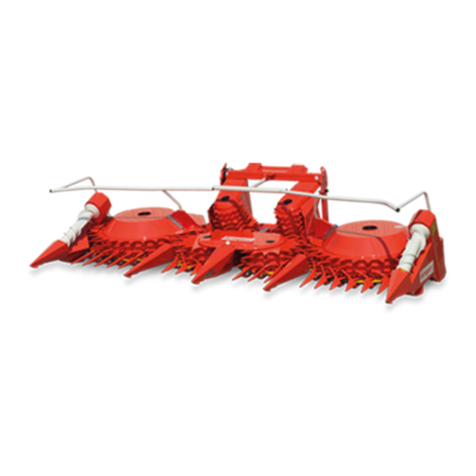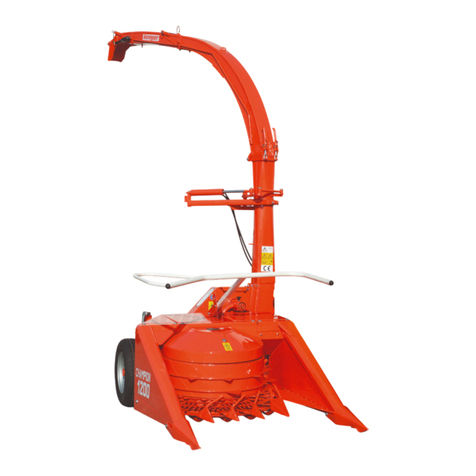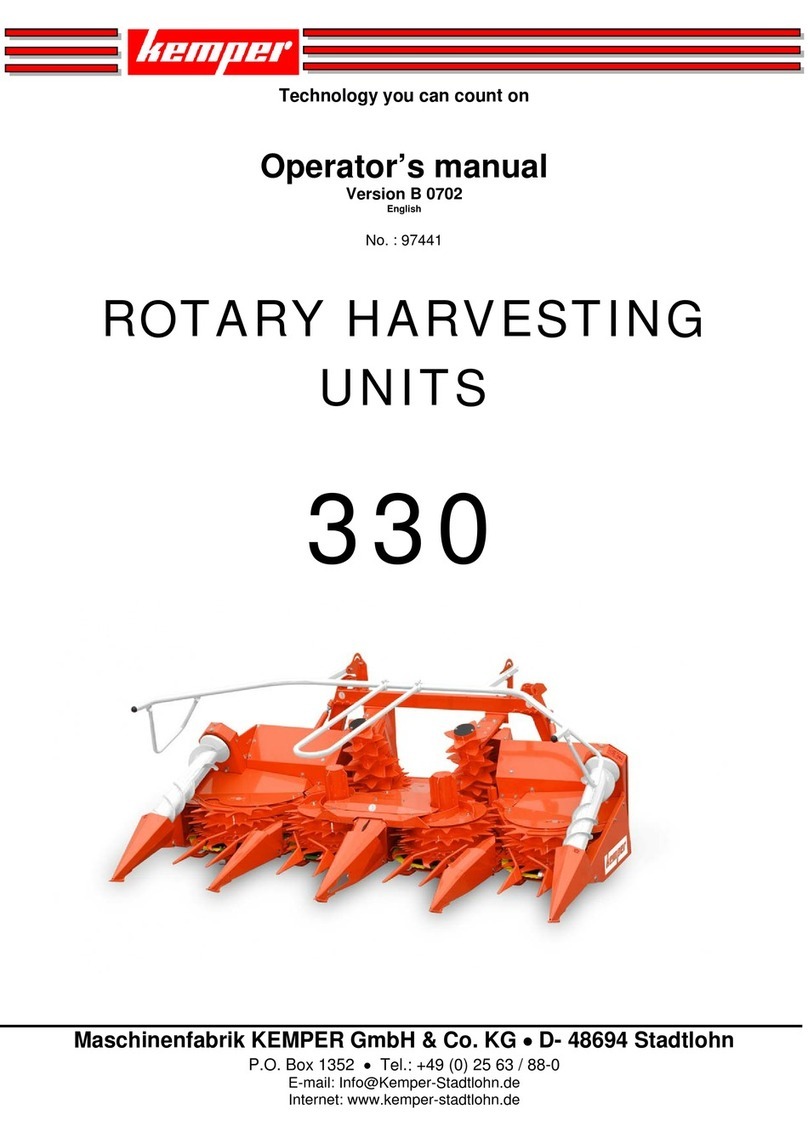
Contents
Page
Attaching to KRONE Forage
Harvesters (Models BIG X 480, 530,
580 and 630) ..................................................22-2
Attaching to KRONE Forage
Harvesters (Models BIG X 500, 600,
650, 700, 770, 800, 850, 1000 and 1100) ......22-8
Connect Clearance and Indicator Light
Wiring Harness (375plus and 390plus) ............ 22-11
Switch Off Reverse when Idling........................ 22-11
Attaching to a FENDT Forage Harvester
Align the Oscillating Frame.................................23-1
Attach the Rotary Harvesting Unit to
FENDT Forage Harvesters ............................23-1
Connect Hydraulic Hoses and Wiring Harness ..23-3
U.j. Shaft ............................................................23-3
Connect the U.j. Shaft ........................................23-3
Change the Hydraulic System............................23-4
Unlock the Oscillating Frame..............................23-5
Detaching the Rotary Harvesting Unit
Install Front Jackstands (Rotary
Harvesting Units for KRONE Forage
Harvesters Only) ............................................25-1
Detach Rotary Harvesting Unit ...........................25-1
Transport
Driving on Public Roads .....................................30-1
Apply Decal (Rotary Harvesting Units
with Support Wheel).......................................30-1
Rotary Harvesting Units with Comfort
Support Wheel ...............................................30-2
Accident Prevention (Rotary
Harvesting Units with Lateral
Protective Brackets) .......................................30-3
Accident Prevention (Rotary
Harvesting Units without Lateral
Protective Brackets) .......................................30-4
Set AHC sensors in the transport position..........30-6
Lock/Unlock Tilt Frame (Rotary
Harvesting Units for CLAAS Forage
Harvesters Only) ............................................30-6
Operating the Rotary Harvesting Unit
Rotary Harvesting Unit Method of Operation......35-1
Operating the Rotary Harvesting Unit -
General Use ...................................................35-2
Clear Blockages .................................................35-2
Clear Blockages on CLAAS Forage
Harvesters......................................................35-2
Gathering Drum Operating Speeds....................35-3
Length-of-Cut Adjustment with CLAAS
Forage Harvester ...........................................35-3
Length of Cut and Drum Speeds with
CLAAS Forage Harvester 830-900
(Types 492 and 496) ......................................35-4
Page
Length of Cut and Drum Speeds with
CLAAS Forage Harvester 830-900
(Type 493) ......................................................35-5
Length of Cut and Drum Speeds with
CLAAS Forage Harvester 930-980
(Types 494, 497, and 498) ...........................35-10
Adjusting Gear Selection with
Multi-Speed Drive for CLAAS
Forage Harvesters .......................................35-13
Lengths of Cut and Gear Selection
with Multi-Speed Drive for CLAAS
Forage Harvesters .......................................35-15
Calibrate Steering Assistance (Rotary
Harvesting Units for CLAAS Forage
Harvesters)...................................................35-15
Harvesting - General ........................................35-16
Harvesting Whole-Crop Silage .........................35-16
Hydraulic System..............................................35-17
Additional Equipment
Special Kit for Row Guidance (Steering
Assistance).....................................................40-1
Automatic Height Control Kit ..............................40-1
Troubleshooting
Correction of Defects on the Rotary
Harvesting Unit...............................................45-1
Lubrication and Maintenance
Service Intervals.................................................50-1
Grease................................................................50-1
Fluid Grease for Drives.......................................50-1
Transmission Oil.................................................50-2
Coolant for Main Drive Friction Clutch................50-2
Alternative and Synthetic Lubricants ..................50-3
Mixing Lubricants................................................50-3
Lubricant Storage ...............................................50-3
Use Genuine KEMPER Parts ............................50-3
Overview of Transmissions and Oil
Levels (Part 1)................................................50-4
Overview of Transmissions and Oil
Levels (Part 2)................................................50-5
Overview of Oil Levels in Input Transmission.....50-7
Changing Oil.......................................................50-8
Every 10 Hours - Rotating Blades and
Cleaners.........................................................50-8
Every 10 Hours - U.J. Shaft................................50-8
Every 10 Hours—Lower Rolls of
Oscillating Frame ...........................................50-9
Every 50 Hours - Axle Pins and Hinges
(390plus Only)..................................................50-9
Every 50 Hours - Clutch Claws...........................50-9
Every 50 Hours - Hinges of Outer
Sections (390plus) .........................................50-10
Every 50 Hours - Hinges of Outer
Sections (360plus, 375plus and 345plus) ..........50-10
Continued on next page
ii 031519
PN=2
